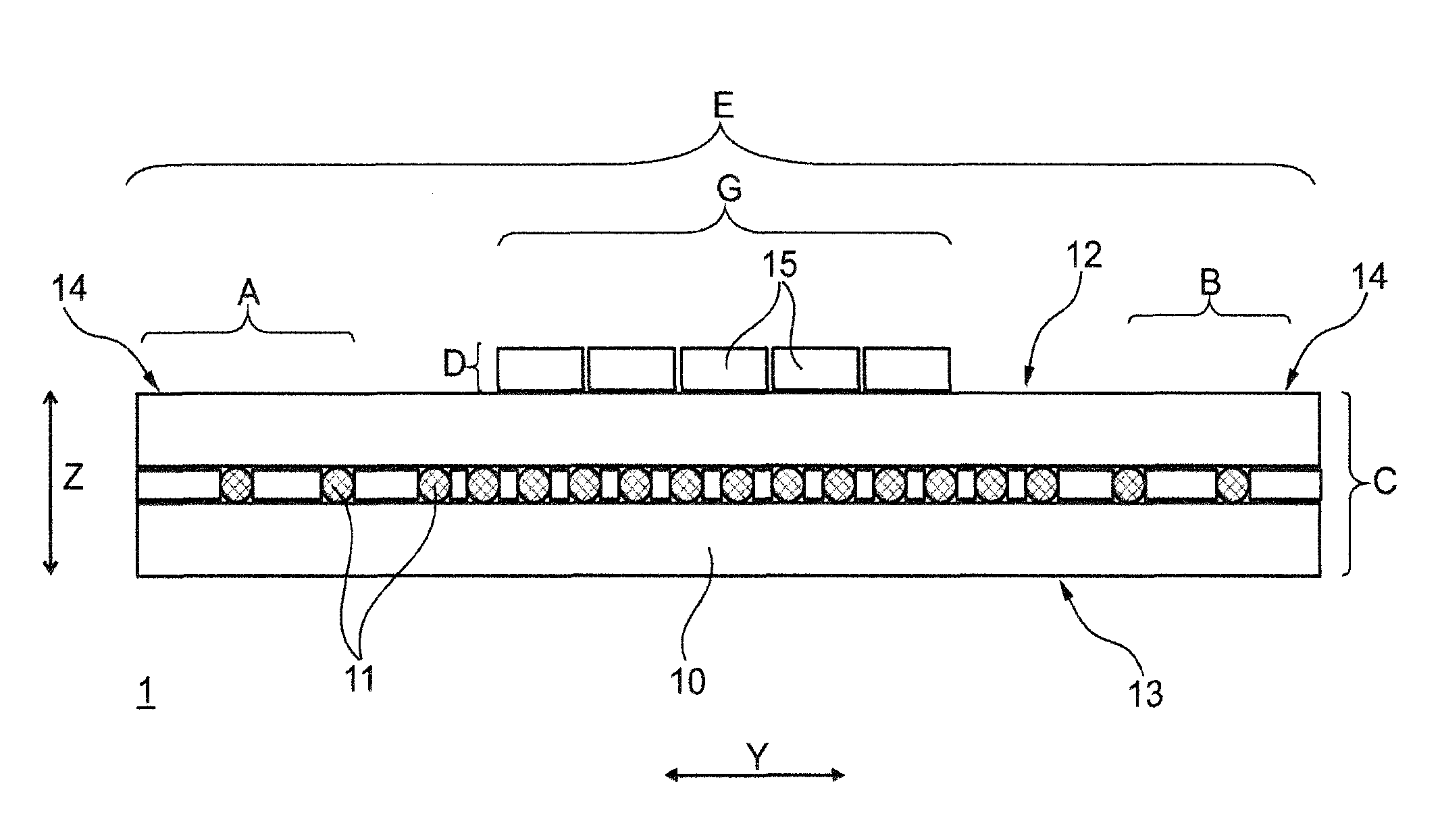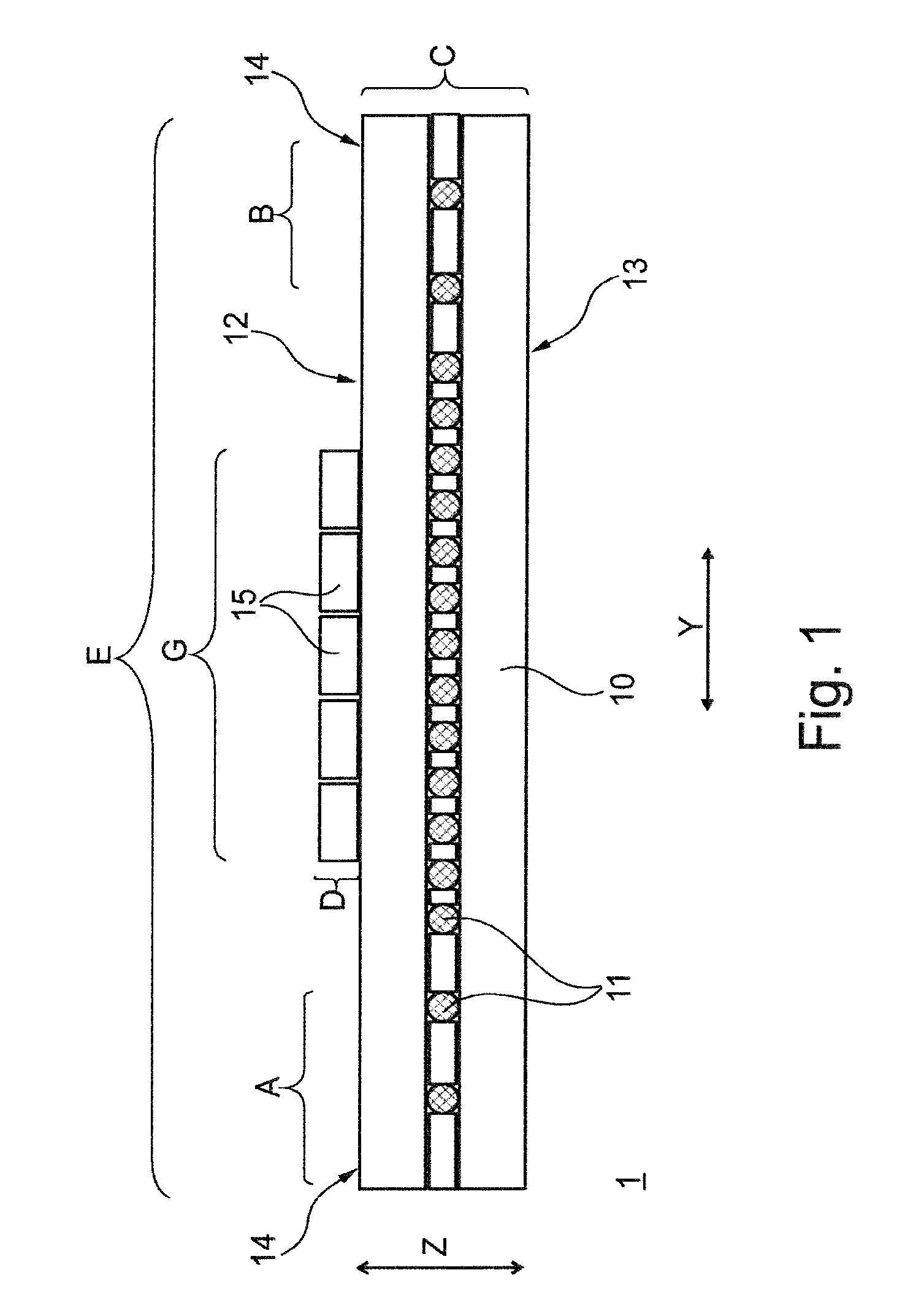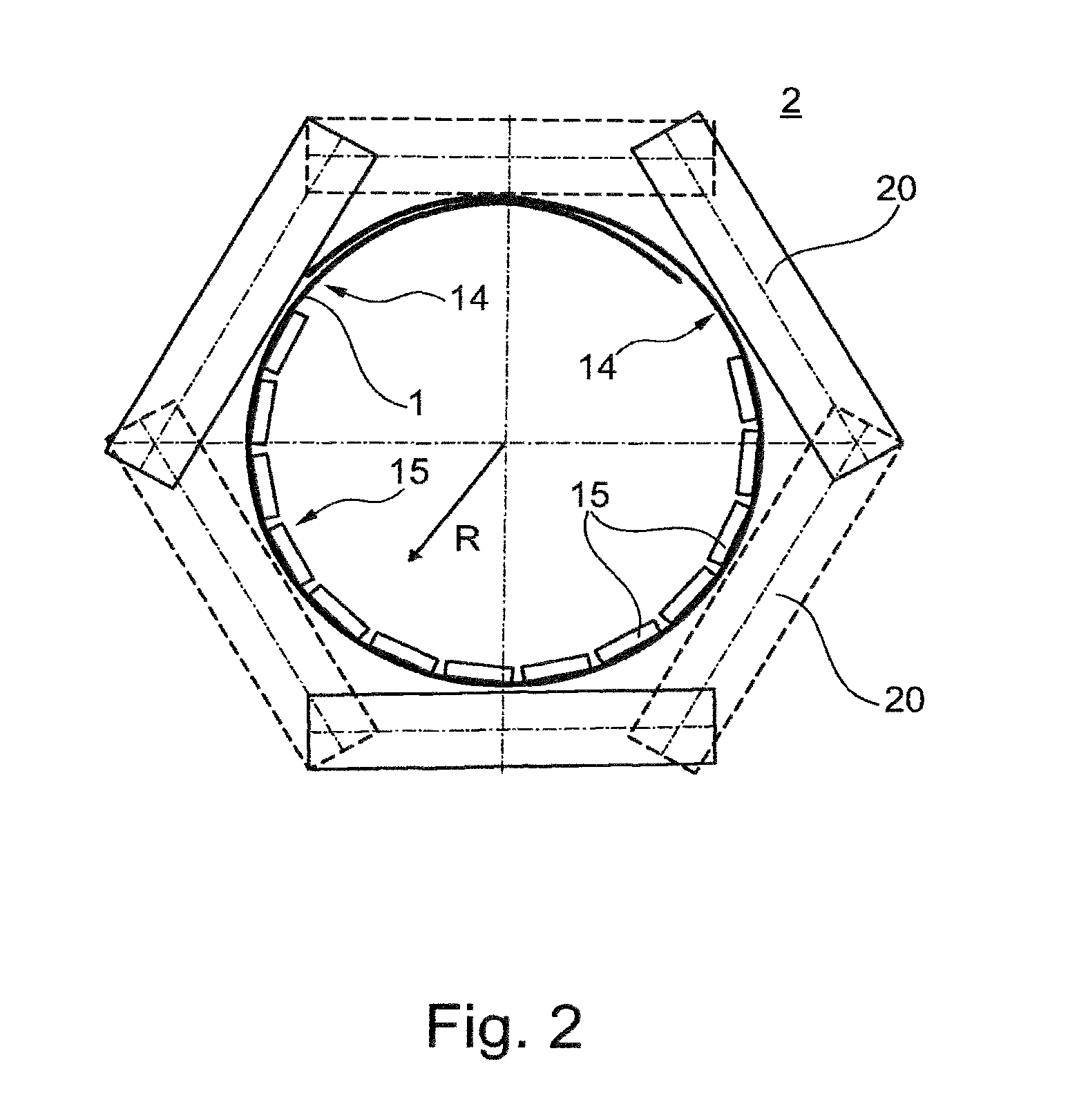Tubular conveyor belt or pocket conveyor belt having a chevron profile arrangement on the carrying side thereof
a technology of conveyor belts and chevrons, which is applied in the direction of conveyors, transportation and packaging, etc., can solve the problems of polluting the environment, posing a risk to the environment, and not being able to be carried out normally, so as to simplify the transportation of the conveyor belt, reduce production costs
- Summary
- Abstract
- Description
- Claims
- Application Information
AI Technical Summary
Benefits of technology
Problems solved by technology
Method used
Image
Examples
Embodiment Construction
[0043]FIG. 1 shows a schematic illustration of a section through a conveyor belt 1 according to the invention. The conveyor belt 1 has a belt body 10, of width E in transverse direction Y, having a carrying-side cover panel 12 and a running-side cover panel 13. Reinforcement members 11 are embedded in the belt body 10, between the two cover panels (12, 13), the reinforcement members running in the longitudinal direction X (cf. FIGS. 3A and 3B) and absorbing the tensile forces of the conveyor belt 1. The reinforcement members 11, or also tension members 11, may be, for example, steel cables 11, in the case of steel-cable conveyor belts 1 (cf. FIG. 3A), or textiles 11 (cf. FIG. 3B) made of, for example, polyester, polyamide, cotton, et cetera, in the case of textile conveyor belts 1, or aramid 11 (not illustrated), in the case of aramid conveyor belts 1. The height C of the conveyor belt 1 extends in the direction Z, that is, perpendicularly to the transverse direction Y and longitudi...
PUM
 Login to View More
Login to View More Abstract
Description
Claims
Application Information
 Login to View More
Login to View More - R&D
- Intellectual Property
- Life Sciences
- Materials
- Tech Scout
- Unparalleled Data Quality
- Higher Quality Content
- 60% Fewer Hallucinations
Browse by: Latest US Patents, China's latest patents, Technical Efficacy Thesaurus, Application Domain, Technology Topic, Popular Technical Reports.
© 2025 PatSnap. All rights reserved.Legal|Privacy policy|Modern Slavery Act Transparency Statement|Sitemap|About US| Contact US: help@patsnap.com



